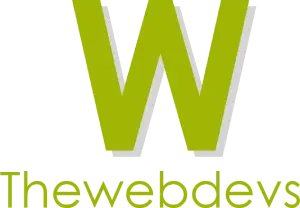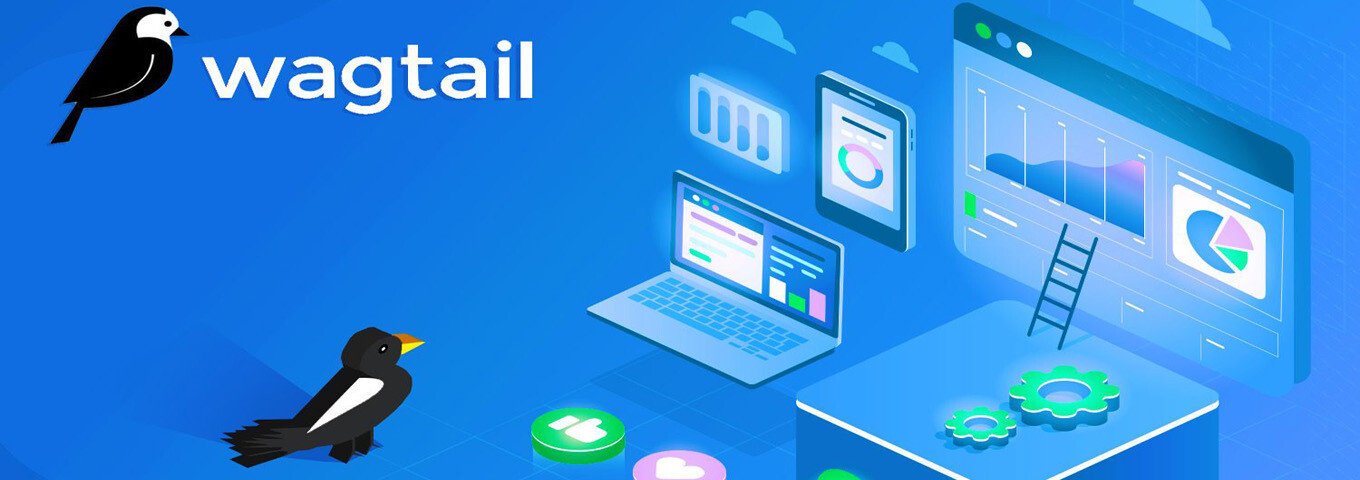In the rapidly evolving landscape of web development, the choice of a content management system (CMS) is crucial for businesses, developers, and content creators alike. With numerous CMS platforms available, Wagtail has emerged as a powerful and flexible option built on the Django web framework. As an open-source, highly extensible, and user-friendly platform, Django Python development has garnered popularity due to its simplicity, scalability, and rich feature set. Whether you are a developer looking to build a custom solution, or a content editor in search of a powerful CMS, Wagtail offers the right tools to meet diverse needs. In this guide, we’ll explore Wagtail in detail, covering its core features, advantages, use cases, installation process, and best practices, helping you understand how it can elevate your web development projects.
What is Wagtail?
Wagtail is an open-source CMS built using Python and Django, two of the most powerful and widely used web development frameworks. While traditional CMS platforms are typically designed with content editors in mind, Wagtail takes a unique approach by focusing on both content creation and web development. This dual focus makes it appealing to developers who want flexibility and control, as well as content editors who appreciate an intuitive, streamlined interface.
Originally launched in 2014 by Torchbox, a UK-based digital agency, Wagtail was designed to meet the needs of organizations that wanted a scalable, fast, and user-friendly content management system. Today, it is used by major companies and institutions, including the National Geographic, Google, and the Royal College of Art. It’s also supported by a vibrant, global community of developers and users who contribute to the continuous improvement of the CMS.
Why Wagtail?
While the open-source world offers a wide variety of CMS platforms, Wagtail’s versatility and developer-friendly nature make it stand out. It’s not just a tool for creating websites; it’s a platform designed to empower creators and developers to bring their visions to life. Here are several reasons why Wagtail has gained popularity:
1. Built for Developers
For developers, Wagtail is a breath of fresh air. Unlike many CMS platforms that have a steep learning curve and require extensive configuration, Wagtail is built on top of the Django web framework. This allows developers who are already familiar with Python and Django to easily extend and customize the CMS to fit their specific needs.
The CMS offers highly customizable page models, making it easy to define how content should be structured and displayed. With Wagtail, developers can create dynamic websites using familiar tools while retaining full control over the design and functionality of the site.
The built-in Django admin is a powerful tool that simplifies tasks like user management, content editing, and data handling. Wagtail integrates seamlessly with Django’s robust features like ORM (Object-Relational Mapping), security, and routing, providing developers with a consistent and reliable platform for creating modern web applications.
2. Intuitive Content Management Interface
On the other side of the spectrum, Wagtail shines for content creators and editors. Unlike many other CMSs, which are often riddled with clunky interfaces and complex workflows, Wagtail offers a clean, user-friendly admin interface that makes content management straightforward and enjoyable. This is particularly valuable for teams that want to empower non-technical users to manage and update content without requiring developer intervention.
The Wagtail admin dashboard is clean and intuitive, making it easy to navigate between pages, view content, and manage media. The editor interface is designed to be as minimalistic as possible, allowing editors to focus on the content without unnecessary distractions. The rich text editor and image management tools make it simple to add and modify content.
One of the standout features of the Wagtail admin interface is its streamfield component. Streamfield enables the creation of highly flexible, rich media content, which allows users to compose content with different types of blocks, such as text, images, videos, forms, and even custom elements. This makes content creation both dynamic and structured, with the ability to create complex layouts without relying on developers.
3. Flexibility and Customization
Wagtail is designed to be highly flexible. It doesn’t dictate how you should organize your content or structure your website. Instead, it provides developers with the tools to build websites that meet specific needs. Whether you’re building a personal blog, an e-commerce platform, or an enterprise-level application, Wagtail can adapt to any project type.
Wagtail’s modular structure allows developers to add only the features they need. For example, you can integrate third-party applications for analytics, e-commerce, or other features without needing to rebuild the entire CMS. Since Wagtail is based on Django, it’s easy to integrate with other Python libraries and tools, making it ideal for developers looking for a more customized experience.
Another significant feature of Wagtail is multi-site management. With Wagtail, you can manage multiple websites from a single admin interface, making it easy to handle large-scale projects with different domains, content structures, and themes. This is particularly useful for businesses with multiple brands or organizations that need to manage several different websites.
4. SEO-Friendly
Search engine optimization (SEO) is a critical component of modern web design, and Wagtail has been built with SEO in mind. It’s easy to configure metadata, titles, and descriptions for each page on your site, ensuring that content is properly indexed by search engines.
Wagtail also integrates well with other SEO tools and provides flexibility for developers to configure custom SEO options like robots.txt, sitemaps, and canonical URLs. Additionally, Wagtail offers support for structured data, which helps search engines understand the content on your pages more effectively.
5. Security and Scalability
As websites grow, so do their security and scalability needs. Wagtail is built on Django, a framework known for its security and scalability features. Django’s security features, such as SQL injection protection, cross-site scripting (XSS) protection, and cross-site request forgery (CSRF) protection, help ensure that Wagtail websites are secure by default.
Additionally, Wagtail is highly scalable. Since it is built with Django’s ORM, it can handle large amounts of traffic and complex data models. Wagtail’s modular architecture also means that you can scale your website over time by adding features and plugins without major performance issues.
6. Built-In Media Handling
Wagtail’s media handling features make it easy to manage images, videos, documents, and other assets on your website. The built-in media library allows users to upload and organize files efficiently, while the system automatically generates multiple versions of images for responsive designs. This ensures that media content is optimized for different screen sizes and devices.
Wagtail’s image cropping feature is also notable. Users can crop and adjust images directly within the admin interface, making it easier to manage media assets without needing additional image editing software.
7. Multi-language Support
For global organizations, having a website that supports multiple languages is essential. Wagtail offers multi-language support, allowing developers to create websites in different languages without needing to implement complex custom solutions. With the ability to create translations for content and manage multiple languages from a single interface, Wagtail simplifies the process of building multilingual websites.
8. Active Community and Documentation
One of the most significant advantages of Wagtail is its active open-source community. The community has contributed to the development of numerous plugins and extensions that extend the functionality of the CMS, from e-commerce integrations to advanced image manipulation tools. Wagtail also has a comprehensive and well-maintained documentation that makes it easy for developers to get started with the platform.
Wagtail’s community is incredibly supportive, with forums, mailing lists, and Slack channels where developers and users can ask questions, share ideas, and contribute to the project.
Wagtail in Action: Real-World Use Cases
To better understand the power and flexibility of Wagtail, let’s look at a few real-world use cases:
1. E-Commerce Websites
While Wagtail doesn’t include built-in e-commerce features, it is highly compatible with third-party e-commerce platforms, such as Saleor and Oscar. By combining Wagtail’s powerful content management with an e-commerce platform, businesses can create dynamic, content-rich online stores that provide a seamless shopping experience for users.
2. News and Magazine Websites
Wagtail’s flexibility makes it a great choice for news sites or digital magazines. With its streamfield and flexible layout options, it’s easy to manage large amounts of content while keeping the editorial workflow smooth. Wagtail’s built-in media handling also helps news outlets manage and display high-quality images, videos, and audio files alongside written content.
3. Educational Platforms
Educational institutions can benefit from Wagtail’s scalable architecture and multi-site capabilities. It allows them to manage different sections of their website, such as course listings, student portals, blogs, and news updates, all within one unified platform. Wagtail’s multi-language support also ensures that educational content can be made accessible to international students.
Conclusion
Python Django web design is quickly becoming a popular choice among developers and organizations looking for a modern, flexible, and powerful content management system. With its developer-centric architecture, intuitive admin interface, and robust features, Wagtail offers a compelling alternative to traditional CMS platforms.
Whether you’re building a small portfolio site or a large-scale enterprise website, Wagtail provides the flexibility, scalability, and customization options to meet your needs. By combining the best of Python, Django, and modern web development principles, Wagtail is a platform that empowers both developers and content creators to build engaging, dynamic websites.
As the digital landscape continues to evolve, Wagtail’s focus on flexibility, creativity, and ease of use makes it an ideal solution for modern web development, and it’s definitely a CMS worth exploring for your next project.



